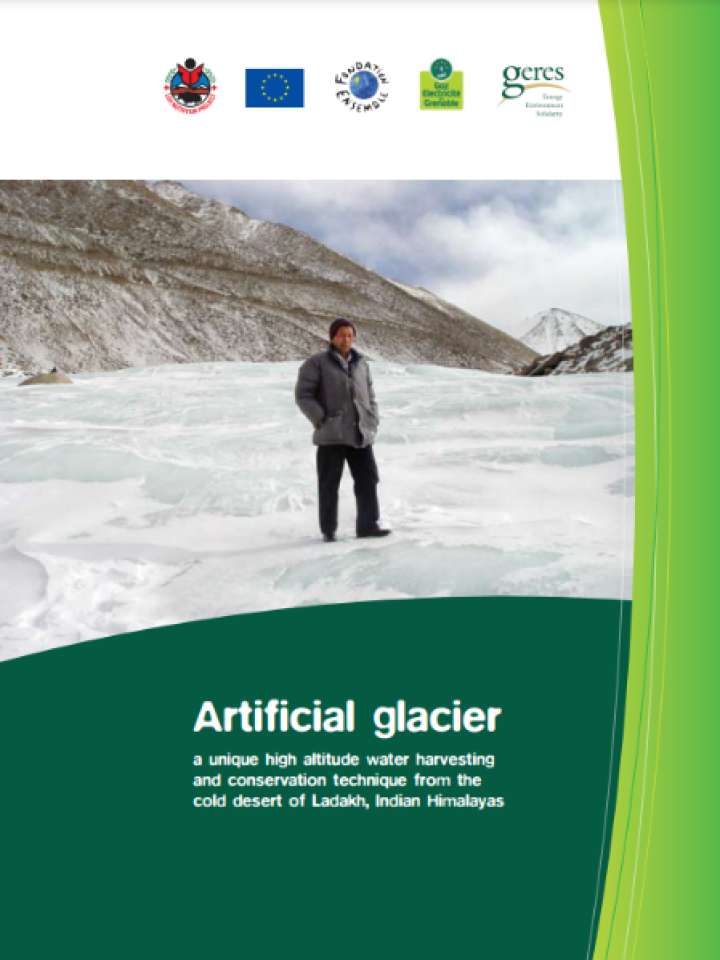Artificial glacier
Over the last few years, impacts of global climate change have been increasingly visible in Ladakh. Rainfall and snowfall patterns have been changing; small glaciers and permanent snow fields are melting affecting water runoff in the streams, and rise in temperature and humidity inducing favorable conditions for the invasion of insects and pests. This report details how locals devised a unique system of water harvesting to augment irrigation water. The system of “Artifcial Glaciers” was then revived by Mr. Norphel; currently working with Leh Nutrition Project (LNP).
This report highlights the replicability of the technique of artificial glaciers. The technique is typically done over the winter and spring and can be replicated in geo-climatic regions similar to Ladakh such as Spiti (in Himachal Pradesh) and some Asian countries like Kazakhstan, Kyrgyzstan, China (Tibet), Nepal, etc. The artificial glacier can be replicated in areas that have: Temperature as low as minus -15 to -20 degrees Celsius during peak winter; Long winter period of 4-5 months minimum to ensure longer expansion of ice, and; Villages mainly dependent on glacier melt water for irrigation.
Explore further
